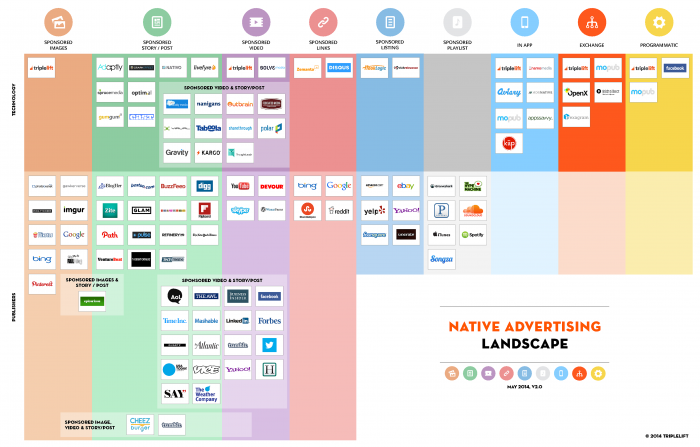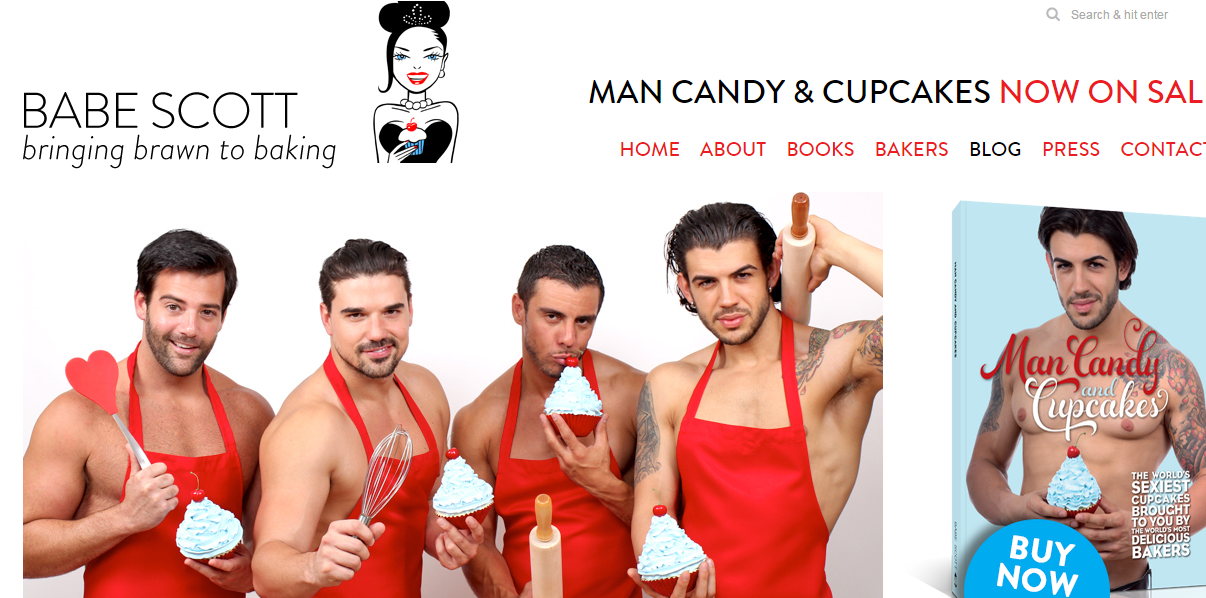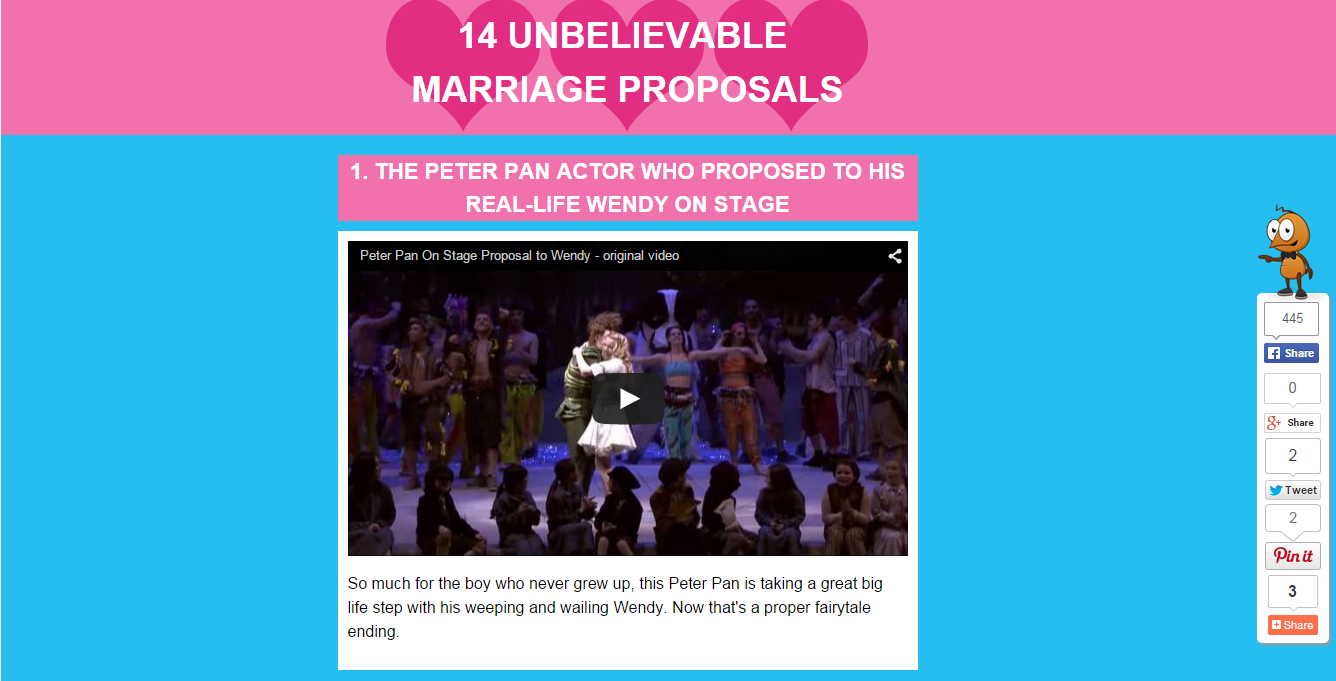
Your Secret Weapon for Powerful Content Outreach: Native Advertising.
March 16, 2015The whole internet may have gone completely content crazy, but developing something great to share with your target market isn’t even half the battle when you’re serious about generating great engagement, squeaky clean links and enviable organic coverage with content marketing.
With the web swamped with headlines and ads all fighting to win a click, it’s not easy to put your content in a place where the right people are going to see it. If you’re struggling to achieve ROI in your content marketing strategy, it’s time to explore new techniques that will get your lovingly crafted content right under the cursors of carefully targeted readers.
Your new weapon of choice? Native advertising.
Native advertising in a nutshell
If you haven’t come across native advertising before, here’s how it works. A huge range of publishers from the Daily Mail and Twitter, to Spotify and Skype now give advertisers the opportunity to buy advertising space in clever locations on their site. Whether it’s a sponsored tweet or a prime position in the “MORE LIKE THIS” section under a relevant article, these sponsored spots are perfect for placing your content directly in front of a relevant and already engaged audience.
With a vast and diverse menu of platforms to advertise on, it’s possible to target extremely niche audiences, ensuring that your ad spend is going on the right people. This excellent infographic from triplelift will introduce you to the key opportunities that are out there.
Via Triplelift
Each one of these options has specific rules, prices, systems, analytics, audiences – you name it. Which is why it’s so helpful to have a good understanding of the native advertising landscape – and how it relates to your clients, their budgets and their target markets.
But, with a little experience, a small dose of trial and error and a soupcon of insight, native advertising can be a powerful, cost-effective way to win fantastic organic coverage and the sort of links that Google loves: free, no-follow, organic and from genuinely interested sources. With an average cost per click of £0.06p, this technique is a low-cost way to offer genuine value to your target audience, using a non-aggressive advertising format. In the right hands it’s a win-win-win.
Native is growing…
That’s why native advertising is growing – and growing fast. According to data from eMarketer:
• Back in 2012, the US was spending $1.4bn on native ads.
• In 2013 that rose to $2.4bn…
• …reaching $3.1bn in 2014.
• In 2015 native ad spending is predicted to rise a further 19.4% to $3.7bn.
Here are a few compelling facts and stats which go some way towards explaining native advertising’s meteoric rise:
• 32% of native ad viewers claimed they’d share sponsored content with a friend or family member. When asked about banner advertising shareability, just 19% would be willing to share.
• This company achieved an astonishing 8% CTR (Click Through Rate) and won 416,000 click throughs using native advertising
• In contrast, the average CTR for traditional display ads has steadily plummeted from 9% in 2000 to a mere 0.2% in 2012
• Browsers are 53% more likely to click on a native ad compared to a banner ad
• 81% of US marketers are actively seeking to increase brand visibility and engagement by harnessing native advertising
How to “go native”
If you’re considering incorporating native advertising into your SEO or content marketing campaign, this blog will give you a head start.
Over the past year I have run a number of native advertising experiments, identifying best practice and working to discover if there can be a positive correlation between native ads and quality shares and links. I’d like to take you though 4 campaigns I ran for 5 SMEs using 4 different networks – and share the valuable lessons I learned along the way…
• Experiment #1
Outbrain & The Lazy Hostess
With a minimum spend of just £6.00 and the opportunity to entirely self-manage campaigns, Outbrain felt like a natural place to start the experiment. From The Guardian to CNN Travel, the platform offers plenty of outlets and tonnes of tools for honing and targeting your campaign.
This campaign was developed to promote a free resource of 15 recipes from The Lazy Hostess, with the goal of winning big links and lots of shares. The result? Failure.
With an average cost per share of £5.80 and just one no-follow domain link achieved, this native advertising campaign simply flopped. But why would a great, free resource from an influential author not attract shares and links? The answer lies on the original landing page. Heavily promotional and clumsily designed, the destination which link-clickers found themselves on did not look or feel like the helpful, free resource they’d been promised.
• Experiment #2
Taboola & Two Little Fleas
Taboola is the go-to network for anyone attempting to reach a UK tabloid audience. With a fun video list of 20 crazy marriage proposals created to promote an online bingo, this platform was the ideal outlet for my next naive trial.
Learning from the hard lesson of The Lazy Hostess, I invested time in creating a non-promotional, non-branded landing page which served up exactly the content described and did not overtly advertise the brand until the bottom of the content. Throughout the page, the opportunity to like and share the content was immediately accessible and an option to embed the resource was offered underneath.
The results were great. 504 social shares at a cost per share of just £0.14p, juicy links at a cost per link of £5.00 and high quality exposure from The Huffington Post who published the content themselves.
• Experiment #3
Facebook & Two Little Fleas
Armed with a video list of ridiculous talk show topics (including “My fear of mustard and pickles is ruining my life”) I decided to try to leverage Facebook’s native advertising opportunities to gain exposure, shares and links for an online bingo portal.
Outreach was modest, but effective, achieving 96 shares and 4 links. However, the cost per share and cost per link were prohibitive at a not-so-peachy £70.00 per link. The lesson here? For small businesses with limited budgets, Facebook is not a great option.
• Experiment #4
Twitter & Entrepreneurial Client
Twitter, meanwhile, is a far more scalable, cost-effective option if you want to use a social media giant for native advertising. It’s run on a cost-per-engagement basis, which means that you’ll pay per click and per share. Twitter’s advertising options were recently only available to bigger brands, now the doors are open and it’s well worth exploring the opportunities the platform offers for highly targeted advertising via keywords or the people users follow.
Personally, I’d recommend the latter option, which is how I gained 17 links (£5.88 cost per link) and 204 shares (£0.08p cost per share) for a listicle of the 10 Books Every Entrepreneur Should Read. By targeting the followers of the authors featured on the list, this piece of content enjoyed lots of great, organic coverage and shares, spreading the cost of direct, original RTs (21 at £4.76) to a whole other level.
Using Twitter for native advertising
On the back of the success of my Twitter campaign, I’d like to share a little bit of best practice to get you started on the platform…
• Target based on who users follow
You have two options for targeting here. Targeting by keyword and targeting by who users follow. Although SEO professionals are pretty much hard-wired to choose keyword-based options, the ‘following’ option seems to yield far more accurate results. The correct keywords can be tough to identify and can be used in all sorts of unrelated contexts. Looking at who follows who will give you a far clearer picture of your targeted audience, their likes, dislikes and preferences.
• Avoid @ & #
It’s natural to try to make your Tweets as interactive as possible, however, when you’re paying a cost per engagement, the only thing you want users to click on is the link to your content, otherwise you’re just throwing your spend away!
• Embrace Twitter cards
If you’re not making full use of Twitter cards, you should be. These recent developments allow you to include lots of lovely rich media which ensures you take up a healthy slice of Twitter feeds, capturing your audience’s full attention. They’re pretty similar to open graph tags, but you’ll need to get Twitter approval before you use them. Well worth the effort, though.
Looking the part
If there’s one thing you need to know about native advertising, it’s that your content doesn’t need to be mind-blowing. Instead, it needs to be packaged correctly. Amazing content which looks heavily promotional and feels unintuitive to explore will not give you the exposure you need. Instead, focus on decent content which looks interesting and doesn’t send visitors running for the hills with aggressive promotions.
In best practice terms this boils down to:
• Creating a bold, visually interesting microsite for your content
• Avoiding heavy branding (no big logos, no telephone numbers at the top, etc.)
• Making content as readable as possible with plenty of multimedia, short paragraphs and eye-catching sub-headings
• Including lots of opportunities for sharing
• Providing options to tweet images and quotes
– Image plugin
– Quote plugin
• Including embed codes at the bottom
“How One Phenomenal Headline Grabbed Everyone’s Attention”
But before your audience reach your perfectly presented content, you need to grab their attention. That’s where your headline comes in. It’s impossible to underestimate the importance of a great headline. A good one could help your content go viral, a bad one will leave your content languishing in obscurity.
Look to websites like BuzzFeed and Upworthy for inspiration. Upworthy believe headlines are so important that they regularly A/B test 25 variations before choosing the ultimate version to run with. Here’s what Upworthy have to say on the matter: “You can have the best piece of content and make the best point ever. But if no one looks at it, the article is a waste. A good headline can be the difference between 1,000 people and 1,000,000 people reading something.”
So how can you craft headlines that make a difference to your native advertising campaign?
• Pose a question
How? Why? What? Where? Questions pique curiosity and offer something readers really want: answers.
• Use a number
Studies regularly demonstrate that headlines which include numbers rack up more clicks
• It’s all about “You”
Make it personal, grab attention and start a relationship with the reader by involving them in your headline. e.g. 17 Techniques Which Will Turn You Into a Native Advertising God
• Test, test, test!
Most importantly, use data to discover which headlines work, and which don’t. A/B testing is a crucial part of this – and it doesn’t need to be complicated. For $99, the AppSumo plugin will give you the power to easily test multiple headlines.
The take home
And that’s a wrap. I hope you’ve picked up some useful pointers from my successes and learned some helpful lessons from my less fruitful forays into native advertising.
Done well, native advertising is a powerful, cost-effective way to generate good organic exposure for your content. It’s scalable and therefore ideal for smaller businesses, and it can give a low-cost boost to your original SEO and content marketing strategies. If you are going to give this technique a go, here are my parting words of wisdom:
• Know your publishers
Take time to get to grips with a range of platforms which publish advertising on a broad range of websites. The better you understand the audiences they can reach, and the tools available, the more effective your native advertising will be.
• Be scientific about headlines
This is the first glimpse readers will have of your content. Your headline will either inspire a click or get overlooked. That’s why it’s essential to craft the most clickable possible headline. Use the headline writing best practice outlined above and make sure you A/B test as rigorously as you can to give your campaign the best chance of web domination.
• Look the part
Your content doesn’t need to be Nobel prize-winning, but it does need to serve up what your original ad offered, make visitors feel comfortable and grab their attention all at once. If you can tick all these boxes you’ll see much more value from your native advertising campaign.
• Encourage sharing
From using Open Graph formats to including embed codes beneath your content; give visitors absolutely every opportunity to share your content, without bombarding them. It’s a fine line, but keep your buttons available yet unintrusive and you’ll enjoy better exposure.
• Measure your success
How do you know how far you’ve come if you have no idea where you’ve started? It’s really important to measure your campaign to analyse the performance of your native advertising. Make sure you look at factors like bounce rate, time on page and goals.
Above all, set yourself clear click per link (CPL) and click per share (CPS) targets and look closely at your results. This data provides valuable insight into what you’re doing right and, more importantly, where you’re going wrong.
Pete Campbell is Director of Kaizen SEO.
You can also hassle him on Twitter @PeteCampbell



